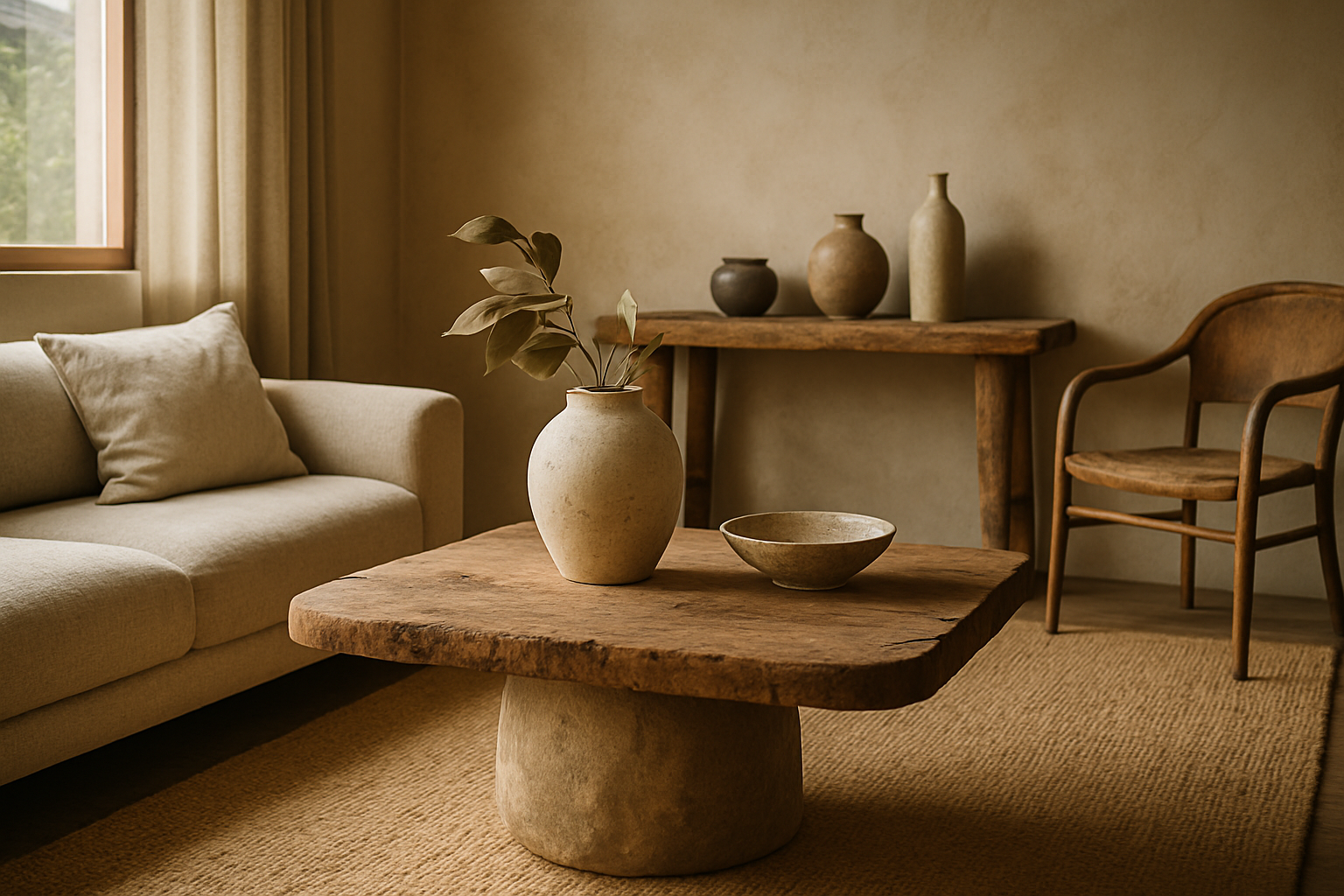The Resurgence of Wabi-Sabi in Modern American Homes
Introduction: In a world where perfection often reigns supreme, wabi-sabi—the Japanese philosophy embracing the beauty of imperfection—may seem like an anomaly. However, it is making a resurgence in modern American homes, offering a refreshing contrast to the pursuit of flawlessness. This article explores the roots of wabi-sabi, its current impact on home design, and ways to incorporate this ancient philosophy into our living spaces.

The Roots of Wabi-Sabi
The term wabi-sabi originates from two words: ‘wabi,’ meaning rustic simplicity, and ‘sabi,’ meaning the beauty of age and wear. It is an ancient Japanese philosophy that values the imperfections in life and the natural cycle of growth and decay. Wabi-sabi is about finding beauty in the mundane, the imperfect, and the transient. In the context of home decor, it represents a departure from the glossy, perfect interiors often found in magazines and social media.
Wabi-Sabi in Modern American Homes
In recent years, wabi-sabi has seen a resurgence in American home design. This new wave of interest can be attributed to a growing desire for authenticity and simplicity in the face of a fast-paced, tech-dominated society. Wabi-sabi inspires us to appreciate the beauty of naturally aged items and the charm of the imperfect. It encourages homeowners to choose handmade, one-of-a-kind items over mass-produced goods, highlighting the unique irregularities and textures that come with handmade pieces.
Embracing Imperfection in Home Decor
Implementing wabi-sabi in home decor doesn’t mean you have to live in a rustic cottage or fill your home with vintage items. It’s about embracing the beauty of the imperfect and appreciating the stories behind each item. Here are a few ways to incorporate wabi-sabi into your home:
-
Choose handmade items: Handmade pieces often come with slight imperfections that add character and charm. Look for handmade ceramics, textiles, and furniture.
-
Appreciate the beauty of age: Instead of discarding aged items, appreciate their beauty. A weathered wooden table or a rug with faded colors can add a touch of wabi-sabi to your home.
-
Embrace natural materials: Natural materials like wood, stone, and clay often come with imperfections that add texture and interest.
Wabi-Sabi: A Counterpoint to the Modern World
As we continue to navigate a world that often demands perfection, wabi-sabi offers a refreshing contrast. It encourages us to slow down, appreciate the beauty of the natural world, and find contentment in the simple, imperfect things in life. As more homeowners embrace this philosophy, we can expect to see a shift towards more authentic, mindful, and sustainable living spaces.
Embracing Wabi-Sabi in the Home
Embracing wabi-sabi in the home is about more than just decor—it’s a lifestyle that encourages us to appreciate the beauty in imperfection and to find contentment in the simple things in life. In a world that often values the new, the shiny, and the perfect, wabi-sabi reminds us of the charm and character found in the old, the worn, and the naturally imperfect. As this philosophy continues to gain traction in American homes, it serves as a reminder of the value of authenticity, simplicity, and mindfulness in design and beyond.





